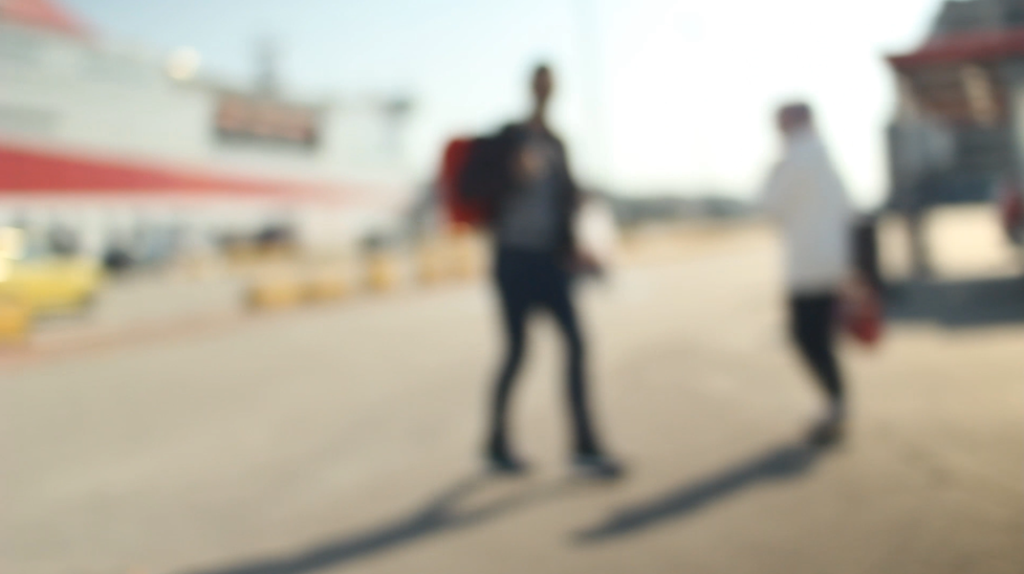21 grudnia 2019
GGM Gdańska Galeria Miejska, Gdańsk, Poland
“The show is a selection of films made in the last five years. It presents situations absent from the media coverage and the author’s process of confronting the distorted image of “other” and dignity and subjectivity of visual representation of vulnerable groups.”
https://www.ggm.gda.pl/pl,0,0,2190,Anna_Domanska_Nie_winnosc_patrzenia_Grassomania_11,0,0,index.php



The text accompanying the show:
In August 2015, a photo of Alan Kurdi, a three-year-old Syrian boy on a Turkish beach, drowned on his way to Greece, circulated the world. His image sparked a wave of sympathy – crowds of volunteers and journalists moved to southern Europe. The turbulent emotions had a real impact on political decisions – Chancellor Merkel opened the door to Germany for people who fled to Europe.
However, the atmosphere changed quickly. A few months later, Europe’s borders were closed, and in March 2016, the EU signed an agreement with Turkey under which the latter committed to stopping those wishing to cross the Aegean Sea. The number of people in Europe looking for safety and a dignified life has decreased significantly, but still, hundreds of them cross the seas every day. Wars are going on all the time, and from time to time, tragic photos of more children appear. But neither the debris-covered boy in the Syrian ambulance nor the dead 3-year-old girl hugging her father in the river has such an impact anymore. Unfortunately – the nature of shock is that with time it turns into a dull routine of normality, and moral panic runs out, disappears from our sight and conscience, absorbed by oblivion – Zygmunt Bauman writes in his book “Strangers at our door”.
I visited with camera many places related to the so-called crisis and at the Grassomania show, I present five films made in the last five years. There is a gap between the first and last film. Not only has the climate around the topic of migration and the situation on the borders changed significantly, but also my position as the author of visual representations and my relations with their characters.
The first film is from the Macedonian-Serbian border. I shot it while volunteering in winter 2015 during rare breaks between distributing warm tea and clothes. People enter the frame only for a moment and then disappear from it. Their image is incomplete, superficial, with a filter of a smile of gratitude.

In another video, made just after the border closure in 2016 in Piraeus’s port, I wanted to avoid the perspective of a volunteer. It turned out to be a challenging position – embarrassing closeness to intimacy and suffering without the vest of an aid organization that places it in scenes and relationships. The views diverged with the senses and blurred the focus of the lens. I got used to it over time and felt at ease in chaotic movement and temporariness. I made closer acquaintances.

The film about Yusef is an annual journey with the protagonist. I published these materials in the media – I wanted the audience to be as broad as possible. I did this because I saw how much the narratives and images related to migration are manipulated and dehumanized.
The dominant image is the invader, which threatens security and our culture. The figure of the victim also appears on the periphery, which is only an object of our sympathy. Both narratives are based on superficial representations, focusing on sensation; they create the image of an other, foreign, exotic, incompatible with our society, someone, which can be easily overlooked and stripped of rights.

Another film about unofficial, educational projects in Athens confronts the newcomer’s stereotypical and often deliberately distorted image. It is the result of my extended stay in Greece and thoughtful observation. Film protagonists have passions and dreams, and although they struggle with various problems, they take action to make them come true.

It turns out, however, that an insightful look that does not avoid nuances is not popular. Such films do not find a place in the media; they do not reach a broader audience. Most people are not interested in a reliable, in-depth narrative, which is not sensational and does not confirm the fears of imagining the other. After many tries, I give up. I have not found a format, way of depicting or storytelling that could break through stereotypes and prejudices.
In Poland, the dramas that still occur on the Greek islands and in many other places are no longer visible. They are beyond our sight, conscience and our care. And some places are like hell on earth, for example, imprisoned for months or years on the island of Lesbos in the Moria camp, they suffer physically and mentally. “This is where you go mad; this is where you lose hope.” – one of the inhabitants of Moria tells me. In the last video, I accompany a group of young men getting tattoos in a tent. In their unlawful, cruel and unpredictable world, a piece of their skin is the only piece of reality they can control.

